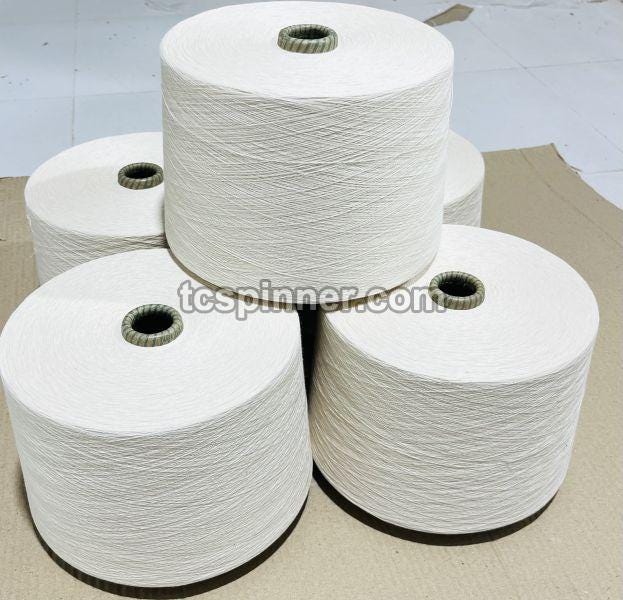Cotton yarn market in India a balancing act after MSP hike.
As cotton growers in India celebrate the rise in the Minimum Support Price (MSP) for cotton for the 2024-25 marketing season. This move, aimed at ensuring remunerative prices to growers, has sent ripples through the entire cotton industry, raising questions about its impact across the supply chain.
On June 19, 2024, the Cabinet approved a hike in MSP for all Kharif crops, including cotton. For long staple cotton (Phuti kapas), the MSP increased by Rs 501 per quintal to Rs 7,521, while medium staple cotton ( kapas) saw a rise of Rs 501 to Rs 7,121 per quintal. This represents a 7.4 and 7.3 per cent increase, respectively, compared to the previous year.
A cause for celebration, but with reservations
Cotton growers are undoubtedly celebrating the increased MSP as this translates to a potential increase of Rs 501 per quintal, as per government data. Cotton Association of India (CAI) estimates a possible 5-7per cent increase in cotton acreage in the coming season due to the attractive MSP.
Supply-demand tight walk: The increased MSP is likely to incentivize cotton growers to plant more area under the crop, potentially leading to higher domestic cotton production a temporary surplus in the short term, according to a report by credit rating agency CRISIL. This, coupled with stagnant demand, could exert downward pressure on market prices. However, experts like K Selvaraju, Director, The South India Mills' Association (SIMA), believe a long-term perspective is crucial. "Stable and higher farmer income can incentivize better practices and improved yields, eventually stabilizing supply," he argues.
Pricing: The higher MSP will act as a floor price for cotton, ensuring farmers receive a minimum price for their produce. This could lead to a rise in cotton yarn and fabric prices across the supply chain potentially impacting garment manufacturing costs. Textile analyst Arvind Poddar predicts a rise of 5-10 per cent in cotton yarn prices. This will definitely impact garment manufacturing costs, he feels. The Confederation of Indian Textile Industry (CITI) echoes this concern, highlighting the potential strain on India's export competitiveness. However, the extent of this impact will depend on market dynamics, global cotton prices, and the efficiency of the textile industry.

Increased investment: The higher MSP can encourage greater investment in the domestic cotton value chain, such as ginning infrastructure, spinning mills, and garment manufacturing. The increased profitability might spur investments across the cotton value chain, from ginning to garment manufacturing. This, as per a report by investment banking firm Edelweiss, could lead to job creation and modernization of the textile sector. Experts like Rahul Shah, CEO of a leading spinning mill, believe the improved quality driven by higher MSP could benefit India's position in the premium cotton exports market. This could benefit India's position in the export market for premium cotton products.
Rise in exports: Increased domestic production due to higher MSP might lead to a surplus of cotton, potentially boosting cotton exports. However, this will depend on global cotton prices and India's competitiveness in the international market. Moreover, with potentially higher domestic production, cotton imports are likely to decrease. Additionally, the government might consider adjusting import duties to manage domestic prices and incentivize domestic consumption.
Impact on other fibers and their supply chain
The long-term impact of the MSP hike on the cotton yarn market hinges on several factors. Increased investment in ginning infrastructure, spinning mills, and garment manufacturing, as predicted by experts, could bolster India's textile sector's competitiveness and create new jobs. Additionally, a focus on improving cotton quality could open doors to premium export markets.
However, managing the potential surplus and ensuring a smooth transition for yarn producers require a multi-pronged approach. The government might consider adjusting import duties to regulate domestic prices and incentivize domestic consumption. Additionally, exploring new export avenues and encouraging industry efficiency will be crucial in navigating the post-MSP hike scenario.
The cotton yarn market in India stands at a crossroads. While the MSP hike promises a brighter future for farmers, the industry needs to adapt and innovate to navigate the potential challenges and unlock the long-term benefits of this policy shift.
